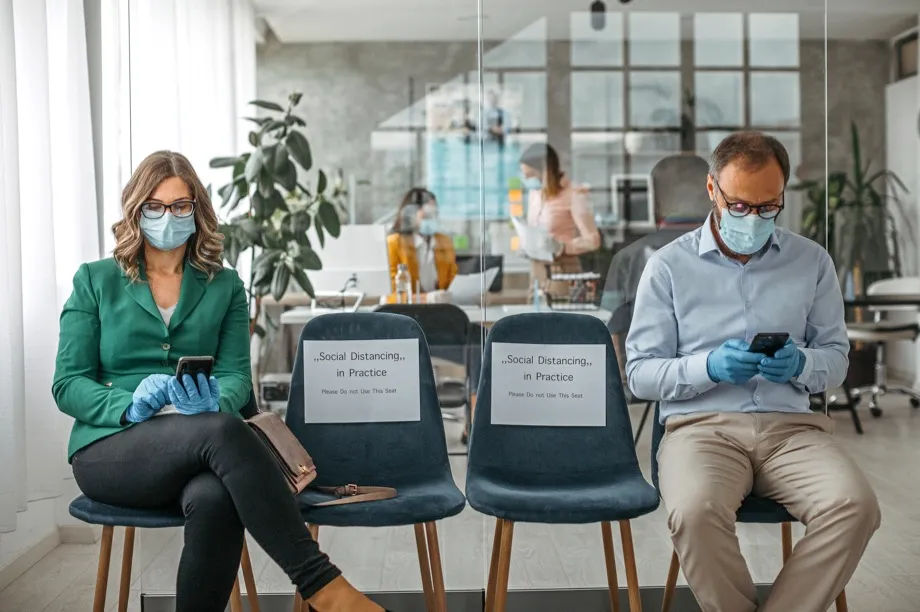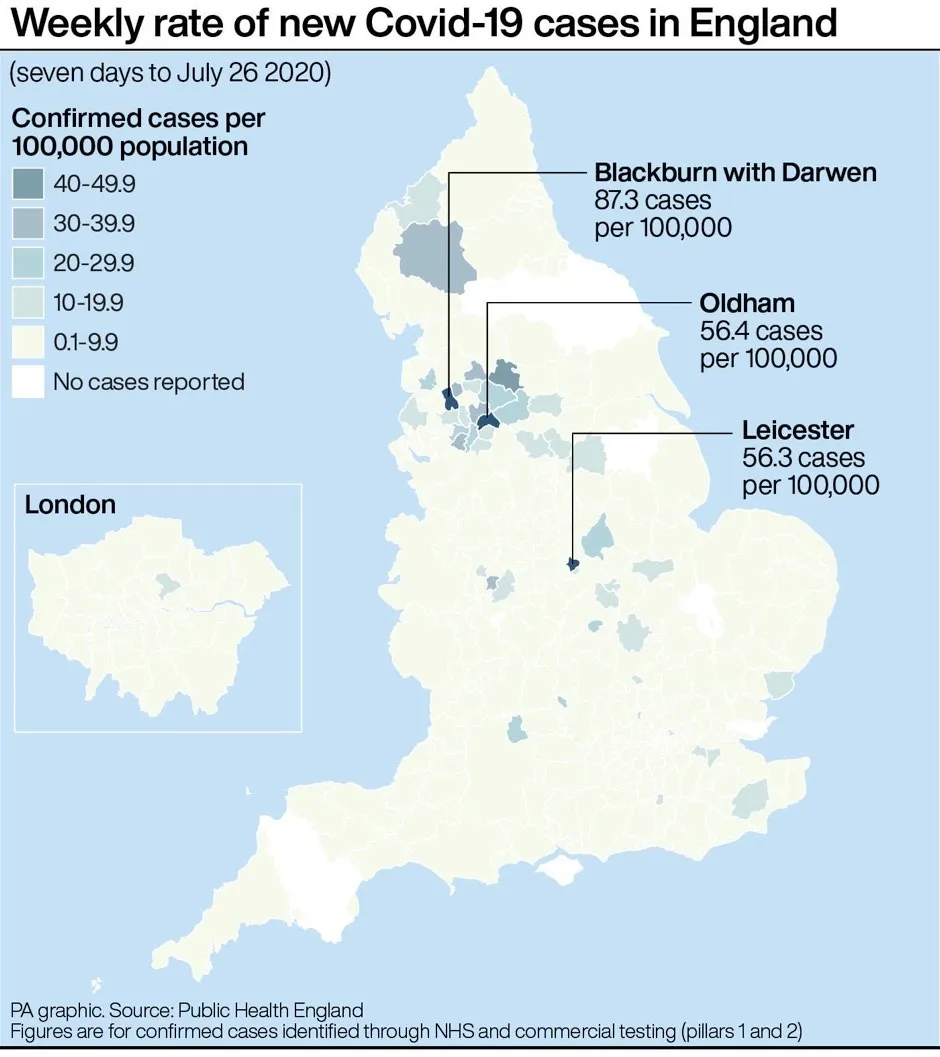The NHS Test and Trace programme needs to be scaled up in order to reopen schools safely, researchers have said.
A new modelling study has implied that reopening schools in September must be combined with a high-coverage test-trace-isolate strategy to avoid a second wave of COVID-19 later this year.The study comes as Australian research found there were “low” levels of coronavirus transmission in schools and nurseries.
The modelling study – which simulates various scenarios – examined the possible implications of schools reopening in the UK coupled with broader reopening of society, such as more parents returning to the workplace and increased socialising within the community.
The authors found that “with increased levels of testing… and effective contact tracing and isolation, an epidemic rebound might be prevented”.But in a worst-case scenario, a second wave could be 2.3 times higher than the first, according to the study published in The Lancet Child And Adolescent Health.
Read more about COVID-19:
- Face mask use needed to ‘prevent COVID-19 second wave’
- Second wave of coronavirus could be spotted in sewage
It comes after one scientist suggested that pubs may need to shut to allow schools to reopen.
Professor Graham Medley told the BBC on Sunday there may need to be a “trade-off”, with the reopening of schools seen as a “priority” for children’s wellbeing.
In the new study, researchers from UCL and the London School of Hygiene and Tropical Medicine (LSHTM) simulated what would happen in an “optimistic” scenario assuming 68 per cent of contacts of people who tested positive could be traced. In the more pessimistic scenario the system had 40 per cent coverage.
But one of the authors, Chris Bonell, professor of public health sociology at LSHTM, said the current testing system has “about 50 per cent coverage”.

“Our findings suggests that it might be possible [to avoid] a secondary epidemic wave in the UK, if enough people with symptomatic infection can be diagnosed and their contacts traced and effectively isolated,” he said.
“Reopening schools fully in September, alongside reopening workplaces in society, without an effective test, trace, isolating (TTI) strategy could result in a second wave of infections between two and 2.3 times the size of the original wave.
“This is a scenario with model, not a prediction of what is going to happen. It all depends on the other measures and the level of TTI coverage.
“Currently, TTI is not achieving the levels that we modelled. Looking at the NHS reports from the TTI system, it looks like it’s about 50 per cent coverage.”
This is model data but the real data is showing very little transmission in schools
Prof Russell Viner
He added: “The most recent data [shows] about 81 per cent of positives are interviewed, about 81 per cent of those report contacts and about 75 per cent of those contacts are reached so overall that equates to coverage of 50 per cent.
“It looks from the ONS data like there are about 4,200 new infections per day. And it looks like from the testing data there are about 4,200 testing positive per week. So it looks like about one in seven. So, that’s not good enough, basically.”
But he said the coverage rates were following an “upward trend”.
The authors said that without appropriate levels of testing and contact tracing, reopening of schools together with gradual relaxing of the lockdown measures are “likely to induce a second wave that would peak in December 2020 if schools open full-time in September”.

The model assumes that around 70 per cent of people would return to workplaces once their children returned to school and up to a 90 per cent increase of mixing within the community with schools reopening.
Dr Jasmina Panovska-Griffiths, senior research fellow and lecturer in mathematical modelling, at the Institute of Epidemiology and Health Care, UCL, added: “Our result show that reopening schools fully in September will not lead to a second wave if accompanied by a comprehensive test, trace and isolate strategy.”
Russell Viner, professor of adolescent health at UCL Great Ormond Street Institute of Child Health, added: “This is model data but the real data is showing very little transmission in schools.”
The research from Australia, also published in the same journal, examined real-world data from the first wave of COVID-19 in New South Wales.The data from January to April examined lab-confirmed COVID-19 cases in educational settings.Researchers investigated onwards transmission.
Read the latest coronavirus news:
- Asymptomatic coronavirus found in 'up to 20 per cent of people'
- Dogs trained to sniff out patients with COVID-19
Data from 15 schools and 10 nurseries showed that although 27 children or teachers went to school or nursery while infectious, only an additional 18 people later became infected.
The authors concluded: “Children and teachers did not contribute significantly to COVID-19 transmission via attendance in educational settings”.
A government spokesman said: “Plans have been put in place to ensure schools can re-open safely. Local health officials, using the latest data, will able to determine the best action to take to help curb the spread of the virus should there be a rise in cases.”
How can I protect myself from the coronavirus when shopping?
You’ll have seen signs in your local supermarket advising you to keep two metres from others while moving around the store. This is key to reducing your chances of catching the virus while shopping.
The coronavirus SARS-CoV-2 is spread through respiratory droplets that leave our mouth and nose when we cough, sneeze, or sometimes even talk. The droplets sprayed out by an infected person will contain the virus, which could then enter your body via your mouth, nose or eyes (this is why you shouldn’t be touching your face).
Respiratory droplets don’t usually travel more than one metre, so by keeping two metres from others, you’ll reduce the likelihood of being in the firing line. To make it easier to keep your distance, try to shop during off-peak hours, choose a store that’s limiting the number of people who can be inside at any one time, and use self-checkout if you can.
Keeping your hands clean is the other main thing you can do. If possible, wipe the trolley or basket handles with a disinfectant wipe when you arrive at the store. When you get home, wash your hands or use hand sanitiser before and after unpacking your bags.
A US study found that the coronavirus can survive for up to 24 hours on cardboard, and up to three days on hard, shiny surfaces such as plastic, so wiping down your purchases with a disinfectant spray or a soapy cloth before you put them away is another good habit to get into.
Read more:
